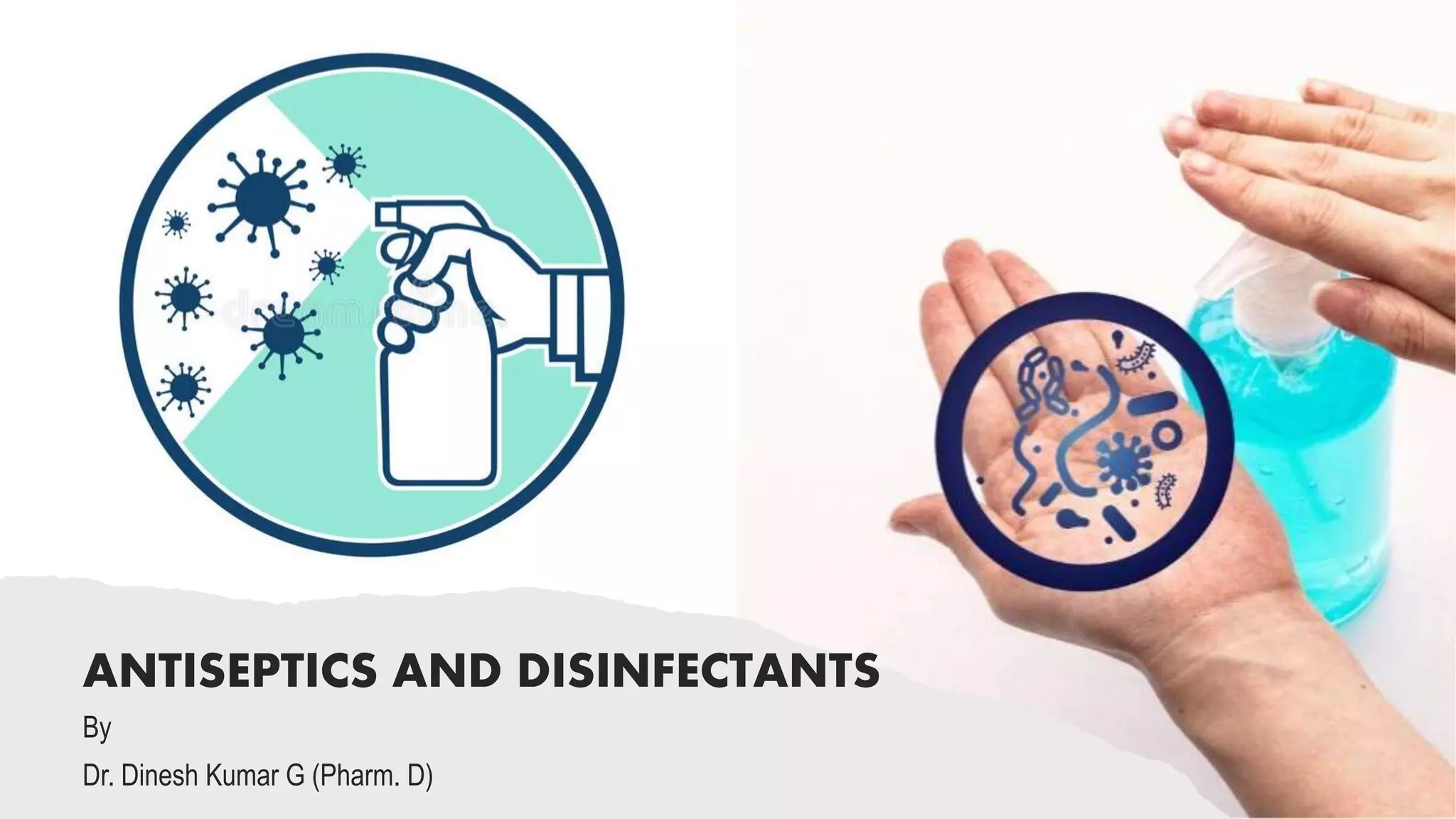The document by Dr. Dinesh Kumar G discusses antiseptics and disinfectants, defining them as agents that inhibit or kill microbes, distinguishing between their use on living surfaces (antiseptics) and inanimate objects (disinfectants). It highlights the characteristics of effective antiseptics and disinfectants, their mechanisms of action, classification, and examples of specific agents and their applications. Additionally, it covers the differences between disinfection, sterilization, and other related terms, while emphasizing the importance of factors influencing germicidal activity.
































